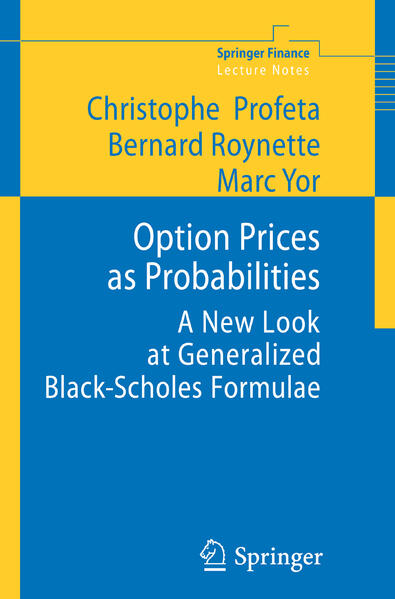
Zustellung: Di, 24.06. - Do, 26.06.
Versand in 2 Tagen
VersandkostenfreiBestellen & in Filiale abholen:
Discovered in the seventies, Black-Scholes formula continues to play a central role in Mathematical Finance. We recall this formula. Let (B , t? 0; F , t? 0, P) - t t note a standard Brownian motion with B = 0, (F , t? 0) being its natural ? ltra- 0 t t tion. Let E := exp B? , t? 0 denote the exponential martingale associated t t 2 to (B , t? 0). This martingale, also called geometric Brownian motion, is a model t to describe the evolution of prices of a risky asset. Let, for every K? 0: + ? (t) :=E (K? E ) (0. 1) K t and + C (t) :=E (E? K) (0. 2) K t denote respectively the price of a European put, resp. of a European call, associated with this martingale. Let N be the cumulative distribution function of a reduced Gaussian variable: x 2 y 1 ? 2 ? N (x) := e dy. (0. 3) 2? ? ? The celebrated Black-Scholes formula gives an explicit expression of? (t) and K C (t) in terms ofN : K ? ? log(K) t log(K) t ? (t)= KN ? + ? N ? ? (0. 4) K t 2 t 2 and ? ?
Inhaltsverzeichnis
Reading the Black-Scholes Formula in Terms of First and Last Passage Times. - Generalized Black-Scholes Formulae for Martingales, in Terms of Last Passage Times. - Representation of some particular Azéma supermartingales. - An Interesting Family of Black-Scholes Perpetuities. - Study of Last Passage Times up to a Finite Horizon. - Put Option as Joint Distribution Function in Strike and Maturity. - Existence and Properties of Pseudo-Inverses for Bessel and Related Processes. - Existence of Pseudo-Inverses for Diffusions.
Produktdetails
Erscheinungsdatum
12. Februar 2010
Sprache
englisch
Auflage
2010
Seitenanzahl
292
Reihe
Springer Finance
Autor/Autorin
Christophe Profeta, Bernard Roynette, Marc Yor
Verlag/Hersteller
Produktart
kartoniert
Abbildungen
XXI, 270 p. 3 illus.
Gewicht
446 g
Größe (L/B/H)
235/155/16 mm
ISBN
9783642103940
Entdecken Sie mehr
Bewertungen
0 Bewertungen
Es wurden noch keine Bewertungen abgegeben. Schreiben Sie die erste Bewertung zu "Option Prices as Probabilities" und helfen Sie damit anderen bei der Kaufentscheidung.










